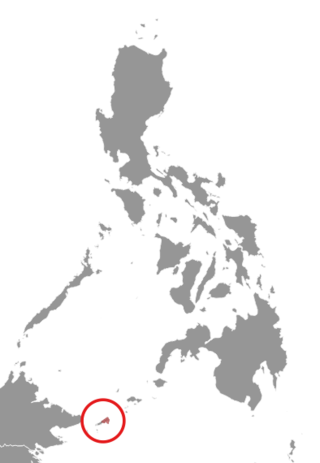
The Nesomyidae are a family of African rodents in the large and complex superfamily Muroidea. It includes several subfamilies, all of which are native to either continental Africa or to Madagascar. Included in this family are Malagasy rodents, climbing mice, African rock mice, swamp mice, pouched rats, and the white-tailed rat.
The orange-brown Atlantic tree-rat or red-nosed tree-rat, is a spiny rat species endemic to Brazil.

Nesomys, also called red forest rats, is a genus of rodent in the family Nesomyidae. It is found only on Madagascar, and contains the following species:

The tanezumi rat, also known as the Asian rat or Asian house rat, yellow-breasted or buff-breasted rat, is a species of rodent in the family Muridae. It is closely related to the black rat. It is widespread in eastern, southern and south-eastern Asia, being found in Bangladesh, Bhutan, Cambodia, China, Cocos (Keeling) Islands, Fiji, India, Indonesia, Japan, North Korea, South Korea, Laos, Malaysia, Myanmar, Nepal, the Philippines, Taiwan, Thailand, and Vietnam.

The Tawitawi forest rat or Tawitawi Island rat is a species of rodent in the family Muridae. It is found only in Tawi-Tawi, Philippines.

The thick-billed cuckoo is a species of cuckoo in the family Cuculidae. It is monotypic within the genus Pachycoccyx. It can easily be distinguished from other brood parasitic cuckoo species by its very thick bill, which is shaped in a rather hawk-like fashion.

Nesomys narindaensis is an extinct rodent that lived in northwestern Madagascar. It is known from subfossil skull bones and isolated molars found in several sites during field work that started in 2001. First described in 2010, it is placed in the genus Nesomys together with three smaller living species, which may differ in some details of molar morphology. The presence of N. narindaensis, a rare element in the local rodent fauna, suggests that the region was previously more humid.
The Pavel's Seram mosaic-tailed rat is a species of rodent in the family Muridae. It is found only on the south coast of the island of Seram in Indonesia. At one time it was thought to be a subspecies of the black-tailed mosaic-tailed rat but in 2005, Musser and Carleton raised it to full species level. The IUCN has insufficient information on which to assess its conservation status so it is listed as "data deficient".
The long-tailed Talaud mosaic-tailed rat or the long-tailed Talaud melomys is a species of rodent in the family Muridae. It is endemic to Karakelong and Salebabu in the Talaud Islands in Indonesia where it occurs in forest habitats. It is morphologically similar to the white-bellied mosaic-tailed rat and was at one time considered to be a subspecies but is now recognised as a distinct species. The short-tailed mosaic-tailed rat is also present on the islands and the shorter tail of that species means that it is likely to be mainly terrestrial whereas M. talaudium is largely arboreal.
The Seram long-tailed mosaic-tailed rat, also known as the Seram long-tailed melomys, is a species of rodent in the family Muridae. It is found only on the south coast of the island of Seram in Indonesia. At one time it was thought to be a subspecies of the white-bellied mosaic-tailed rat but was subsequently raised to full species level. It differs from that species in having a much longer, scale-free tail with a calloused tip which is likely to be prehensile and used while climbing trees.
The Riama mosaic-tailed rat, is a species of rodent in the family Muridae. It is found only on the island of Riama in Indonesia, a small island to the west of Selaru in the Tanimbar Islands. Very little is known about this species, but it may also be present on some of the other islands in this group.

The western nesomys, also known as the lowland red forest rat, is a species of rat endemic to Madagascar. They are suspected to reside within the nooks and crannies of the canyons of the Tsingy de Bemaraha National Park.
There are two species named Lowland red forest rat.







